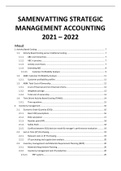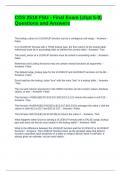Samenvatting
Samenvatting Strategic Management Accounting Master AF Handelswetenschappen KU Leuven ()
- Instelling
- Katholieke Universiteit Leuven (KU Leuven)
Volledige, gedetailleerde, gestructureerde samenvatting van het vak Strategic Management Accounting. Samenvatting bevat alle geziene slides + notities en aanvullingen uit het handboek. De gastcolleges zijn niet opgenomen in de samenvatting. Prof: M. Cools (Campus Carolus, Antwerpen). Aarzel niet om...
[Meer zien]





